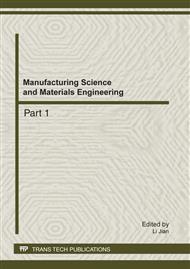p.9
p.15
p.21
p.27
p.34
p.40
p.45
p.50
p.54
Concrete Compressive Strength Prediction Using Rebound Method with Artificial Neural Network
Abstract:
Concrete is a mixture of the cementing material, aggregate and water in a certain proportion and is the most main materials of the civil engineering materials. It is difficult to make modeling for a highly complex material. The concrete rebound value with wide randomness is a dependent variable, while the compressive strength value with narrow randomness is an independent variable. This paper aimed to show possible applicability of artificial neural networks (ANN) to predict the compressive strength. Back propagation neural networks (BPNN) model is constructed trained and tested using the available test data of 108 different concrete specimens. The data of input parameters used in BPNN model were covered the ratio of water to cement, fine aggregate ratio, coarse aggregates, mean value of test area of rebound method measurement. The mean absolute percentage error was less then 10.19% for compressive strength. The results showed that ANNs was good at as a feasible tool for predicting compressive strength.
Info:
Periodical:
Pages:
34-39
Citation:
Online since:
January 2012
Authors:
Price:
Сopyright:
© 2012 Trans Tech Publications Ltd. All Rights Reserved
Share:
Citation:


